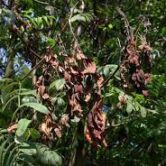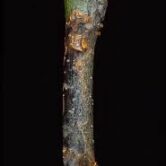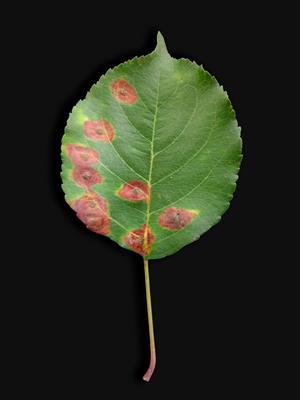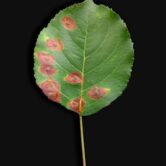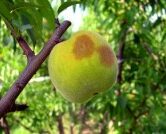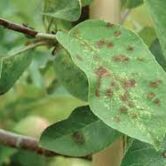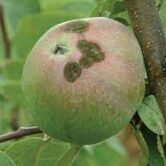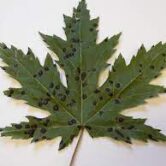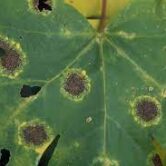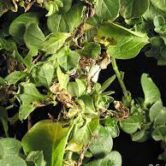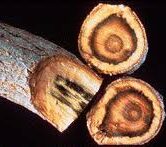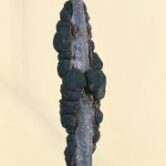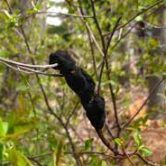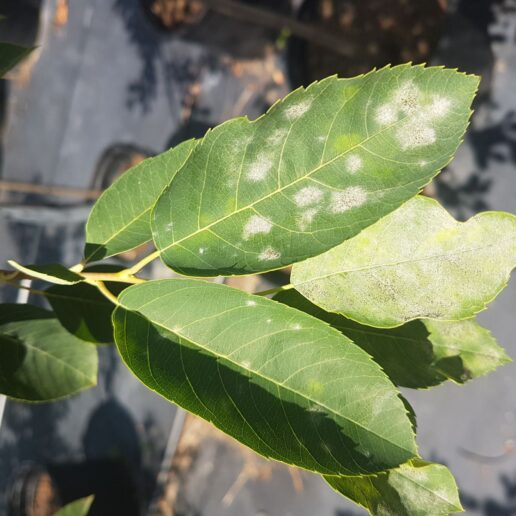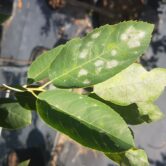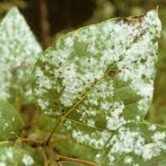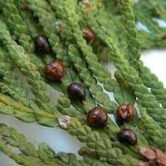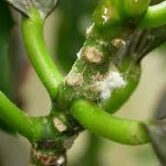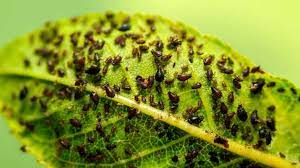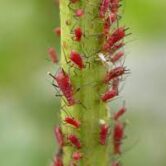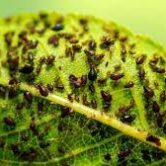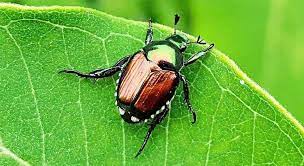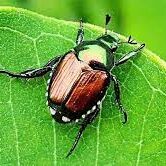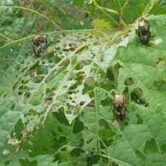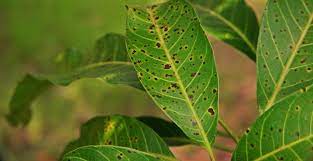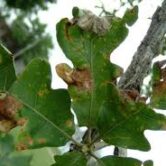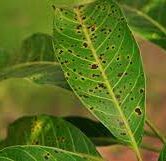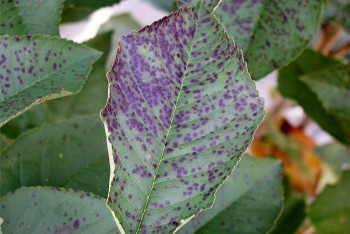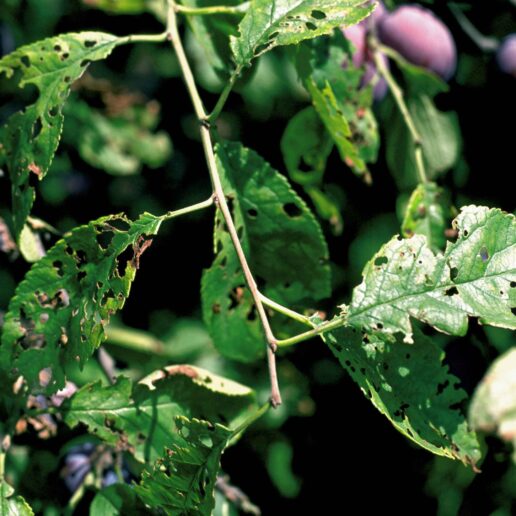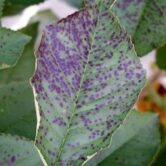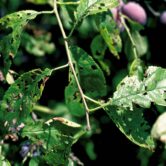Tips for helping a tree that looks sick or unhealthy
If your tree is sick or unhealthy, it isn’t necessarily doomed! A tree is a living being that can get sick but can also get better.
Why is your tree struggling?
Several factors can impact the health of a tree:
- environmental stress: drought, extreme heat, strong winds, frost, ice, etc.
- growing conditions that don’t meet the tree’s needs: insufficient sunlight, compacted or poorly draining soil, a lack of nutrients, low soil pH, etc.
- physical damage: injury or breakage caused by lawn mowers, edgers, landscaping work, etc.
- diseases, pest infestations (insects, mites) or damage caused by mammals or birds.
What to do if your tree is struggling
- Take the time to examine your tree thoroughly, assess its growing conditions and review the Caring For Your Tree page.
- Consult the different sections of our guide on the diseases and pests you may be facing.
- If necessary, ask us or an arborist for advice.
For more information, you can consult the Espace pour la vie website.
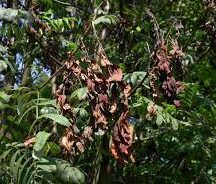
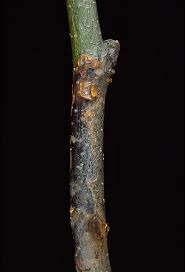


Bacterial blight
Description: This bacterial disease is common in several species of trees. It spreads very quickly and can be fatal for the tree. Bacterial blight spreads rapidly, especially during a hot, humid and rainy spring. The damage it causes resembles burns: the flowers and young shoots wilt, dry out and turn black, often remaining attached to the plant. The bark of infected branches takes on a reddish-brown hue which is clearly distinguishable from the healthy parts.
Detection: Early in the spring, before leafing out, examine the twigs for any bark discoloration. When the tree flowers, inspect the flowers and young shoots because this is when the disease spreads most rapidly. Continue inspecting your tree until mid-summer.
Practical measures: Prune back infected branches immediately, making the cut in healthy tissue at least 30-50 cm (12-20 inches) below any visible discoloration on the bark. Always prune in dry weather and sterilize pruning instruments between each cut with 70% isopropyl alcohol (rubbing alcohol). Rake up and dispose of infected leaves and fruit that fall on the ground and throw away all cuttings and infected debris.
For more information : https://espacepourlavie.ca/carnet-horticole/pests-and-diseases/brulure-bacterienne-des-rosacees https://aimfc.nrcan.gc.ca/en/diseases/factsheet/176
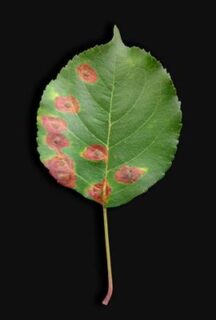
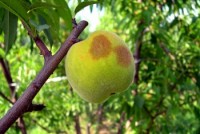
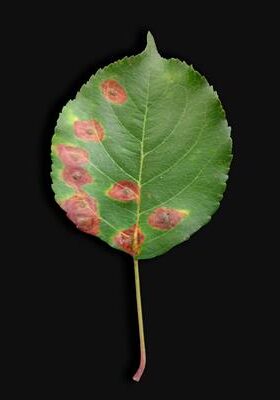

Rust
Description: Trees affected by rust fungus develop yellow and orange spots and swellings on the leaves, fruit or twigs. Warm, humid temperatures encourage fruiting bodies and windy conditions help spread the spores.
Detection: Inspect foliage in early spring. Small, pale-yellow spots appear on the upper surface of the leaves and on the fruit shortly after flowering. The lesions grow and take on a more orange hue, often surrounded by a reddish outline. Sooner or later, small black dots (spermogonia) appear in the center of the lesions. Towards the end of summer, receptacle-like structures appear on the underside of the leaves and on the fruit.
Preventive measures: Avoid planting near junipers and deciduous trees of the Rosaceae family, which serve as alternate hosts for the fungus.
Practical measures: During winter and early spring, cut and discard branches infected with galls or fruiting bodies. Disinfect pruning tools with 70% isopropyl alcohol (rubbing alcohol).
In summer and fall, rake up and destroy infected leaves and fruit as they fall.
Cut down and remove trees that are too severely infected. Do not compost diseased plant debris.
For more information :
https://espacepourlavie.ca/carnet-horticole/pests-and-diseases/rust-of-juniper
http://www.omafra.gov.on.ca/IPM/english/apples/diseases-and-disorders/cedar-apple-quince-rust.html
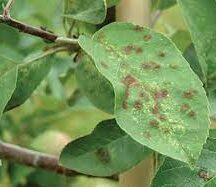
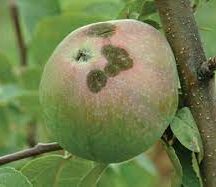
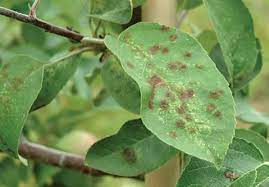
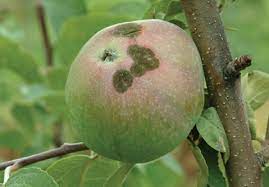
Scab
Description: Scab-causing fungi like cool, wet weather and the risk of infection is greatest in the spring, during periods of rapid leaf and fruit growth. Apple trees, crab apple trees and pear trees are especially at risk. Scab is characterized by the appearance of numerous circular lesions (scabs) on leaves and fruit. Seriously infected trees can suffer severe defoliation and significantly reduced fruit quality.
Detection: Inspect foliage regularly beginning in early spring. The first sign of a tree affected by scab is the appearance of small circular, olive-coloured, velvety-looking spots. At a more advanced stage, these spots turn black and become slightly raised. Heavily infected leaves may turn yellow and drop prematurely.
Scab can also cause spots and cankers (sores) and kill young twigs, especially on pear trees.
Early infection can cause young fruit to drop or become distorted (as the flesh does not develop under the spots). At an advanced stage, scab leaves corky scabs on mature fruit that are similar to those on the foliage.
Preventive measures: Keep trees healthy by watering them regularly, particularly in times of drought. Avoid drastic pruning and fertilizers that are high in nitrogen, which encourage the rapid growth of tender shoots that are more vulnerable to infection.
Practical measures: Pick up and discard infected leaves and fruit as they fall to the ground. Never compost diseased plant debris.
Pesticides: If the infection is serious or was serious in previous years, as a preventative measure use a low-impact pesticide that has sulphur, calcium sulphide or calcium polysulphide (gypsum or lime sulfur) as the active ingredient. Read the product label carefully and follow the manufacturer’s instructions.
For more information :
https://espacepourlavie.ca/carnet-horticole/pests-and-diseases/pommier-and-pear-tree-scab
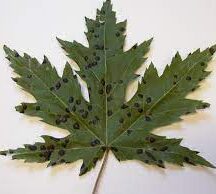
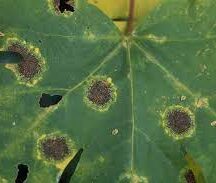
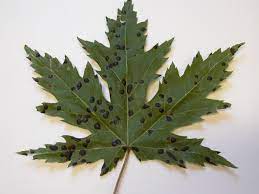
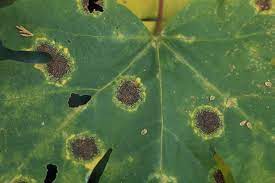
Tar spot
Description: This fungal disease can occur during a rainy spring. Severe infection can cause leaves to drop prematurely. However, tar spot damage is mostly cosmetic and rarely endangers the life of the tree.
Detection: In late spring and early summer, pale yellowish or greenish spots appear on the upper surface of the leaf. Around mid-summer, these spots turn black and take on a tarry appearance.
Preventive measures: Keep trees healthy by watering them regularly, particularly in times of drought. Avoid wetting the foliage to prevent the dispersal and germination of spores.
Practical measures: Pick up and dispose of fallen diseased leaves to prevent new infections.
For more information :
https://espacepourlavie.ca/carnet-horticole/pests-and-diseases/spot-goudronneuse-de-lerable
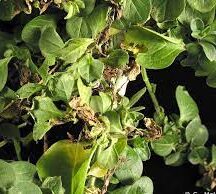
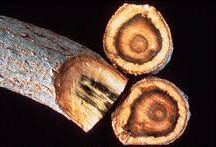
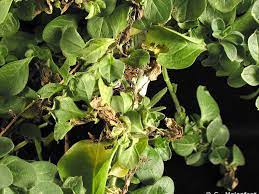

Verticillium wilt
Description: Verticillium wilt causes the sudden wilting of foliage followed by the drying of twigs and branches. This disease is transmitted via contaminated seeds, cuttings, tubers, soil and water.
The first signs of disease resemble stress caused by lack of water. This is followed by the foliage suddenly wilting at the end of certain branches, often at the bottom of the tree, and then leaves turning yellow, drying up and falling prematurely. At a more advanced stage, this infection causes the withering and death of young branches followed by the entire tree.
Detection: Examine plants regularly during the growing season. If in doubt, cut a withered branch to see if there are dark rings in the vascular system or check under the bark for brownish or greenish longitudinal streaks.
Preventive measures: Keep trees healthy by watering them regularly, particularly in times of drought. Avoid injuring the roots (with pickaxes, spades, harrows, tillers) and other parts of the tree (with mowers, blowers, etc.).
Practical measures: Prune affected trees and remove all dead wood. Prune infected branches down to the healthy wood. Disinfect cutting tools regularly with 70% isopropyl alcohol (rubbing alcohol).
For more information :
https://espacepourlavie.ca/carnet-horticole/pests-and-diseases/verticillium-wilt
https://www.phyto.qc.ca/fiche.php?nomal=28&noesp=172&nolist=82&gr=1&pl=
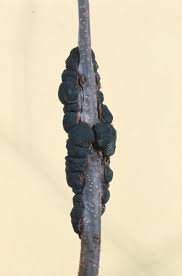
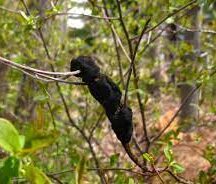

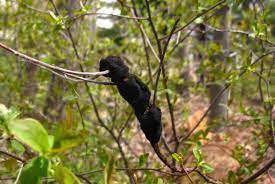
Black knot
Description: This fungal disease particularly affects plum and cherry trees. Infected twigs and branches bear cylindrical, rough, sooty-looking black growths (nodules). Once the nodule completely encircles the twig, the section above the nodules dies off. Initial infection occurs in early spring, but the first symptoms do not appear until a few months later, towards the end of summer on susceptible cultivars or the following spring on more resistant cultivars.
Detection: Inspect branches in early spring and regularly throughout the growing season. Look out for the first sign: a slight bulge at the base of new shoots or on branches.
During the growing season, the fungus grows in the vascular system and expands. Bloated branches crack and greenish, fluffy growths fill the cavities. This velvety appearance indicates that the fungus is fruiting and releasing spores. Towards the end of the summer, the nodules turn brown, take on a corky appearance and then become hard and black.
Preventive measures: Keep trees healthy by watering them regularly, particularly in times of drought.
Practical measures: During dormancy (late fall, winter), prune infected branches before spring growth resumes. Pruning old nodules eliminates overwintering spores that contaminate new growth.
During the growing season, remove nodules as they form. Cut the branches about 10 cm below the base of the nodules.
Make sure to clean the tools between each cut with 70% isopropyl alcohol (rubbing alcohol).
Pesticides: As a last resort, use a low-impact pesticide whose active ingredient is sulfur, calcium sulfide or calcium polysulfide (gypsum or lime sulfur). Read the product label carefully and follow the manufacturer’s instructions.
For more information :
https://espacepourlavie.ca/carnet-horticole/pests-and-diseases/nodule-black
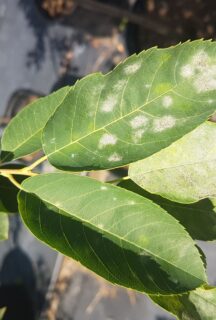

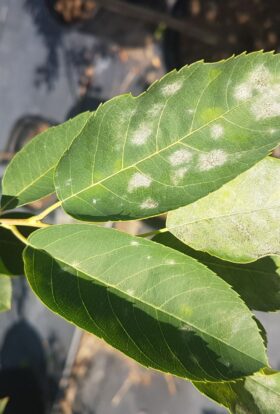
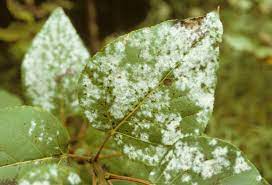
Powdery mildew
Description: Powdery mildew creates powdery or fuzzy spots on plants, sometimes lined with small black dots, and usually appears around mid-summer.
Detection: First look for a thin, whitish film or spots, generally on the tops of the leaves. The damage remains superficial and the spots can easily be rubbed off to reveal the still healthy surface of the leaf.
At a later stage, the white spots thicken and take on a fluffy, powdery appearance (summer spores).
In the case of severe or recurrent infections, mildew can invade all the tender parts of the plant and cause them to dry out.
Preventive measures: Keep trees healthy by watering them regularly, particularly in times of drought. Plant vulnerable species in sunny locations that have good air circulation and respect the recommended planting distances. Avoid drastic pruning and fertilizers that are too high in nitrogen, which encourage the rapid growth of tender shoots that are more vulnerable to infection.
Practical measures: Prune and discard infected parts of annuals and perennials and regularly sanitize cutting tools with 70% isopropyl alcohol (rubbing alcohol).
In hot, dry weather, sprinkling the foliage with water can help prevent the fungus from growing. Avoid wetting the foliage at the end of the day to prevent other types of fungal diseases.
In the fall, rake up and dispose of infected leaves to reduce the chances of the fungus overwintering, a main source of contamination in the spring.
For more information :
https://espacepourlavie.ca/carnet-horticole/pests-and-diseases/white-or-powdery-mildew
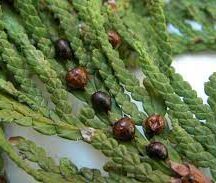
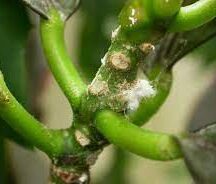
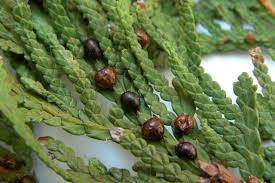
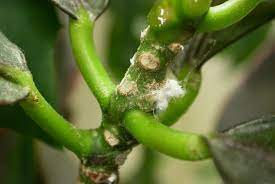
Scale insects
Description: The scale insect superfamily (Coccoidae) includes several genera of sucking insects that can harm trees, fruit and ornamental shrubs. Depending on the species, mature scale insects look like small, bulging scales, miniature shells, or small, flattened discs covered in waxy secretions. In small numbers, these bugs don’t cause severe damage, but large colonies can kill entire branches by sucking their sap.
Detection: Regular visual inspection remains the best method. During the summer, the presence of honeydew, sooty mold, ants and wasps are good indicators. Ants protect scale insects and transport young larvae to new sites. A large amount of honeydew is a sign of a serious infestation that has gone unnoticed.
Preventive measures: Inspect plants regularly. Early identification is key for intervening and preventing infestations that are more difficult to control.
Avoid damaging the tree or using fertilizers that stimulate the growth of tender shoots that are attractive to sucking insects.
Practical measures: Prune branches that have died or that are heavily infested to reduce the number of insects. Make sure to regularly disinfect pruning tools. Eliminate all visible scale insects, dead or alive, as they can harbour hundreds of eggs under their shells or in their ovisacs. Living scale insects are more difficult to remove from the bark, but when they are dead they disintegrate easily.
Scrub the trunk and large branches with a soft brush dipped in soapy water, making sure not to damage the bark.
Rub the leaves and young twigs with a soft cloth or a toothbrush soaked in soapy water. Brush insects occasionally with a cotton swab dipped in rubbing alcohol to dry them out.
Repeat the treatment if necessary to ensure that the entire population is eliminated. A few forgotten eggs or insects are more than enough to rebuild a new colony.
Biological control methods: Encourage the presence of natural predators and parasites (bugs, ladybugs, hoverfly larvae, parasitic wasps) by growing a wide variety of plants.
Pesticides: As a last resort, use a low-impact pesticide whose active ingredient is insecticidal soap or mineral oil (horticultural oil). Read the product label carefully and follow the manufacturer’s instructions.
For more information :
https://espacepourlavie.ca/carnet-horticole/pests-and-diseases/rustic-mealybugs
https://pepinierevilleneuve.com/cochenille-farineuse/
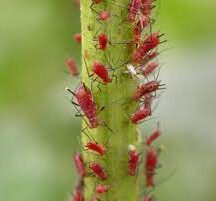
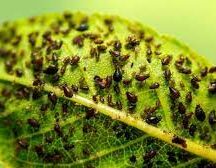
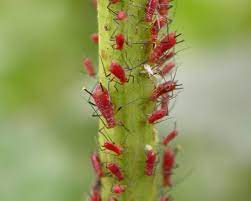
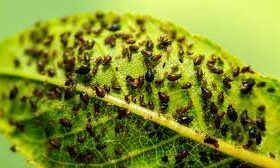
Aphids
Description: These prolific little insects feed on the sap of many ornamental plants and crops. They form dense colonies on young shoots and under the leaves, but they also feed on stems, bark, roots and fruit. They excrete a sweet, sticky substance (honeydew) that attracts ants, wasps and bees, among others, and encourages the development of a black fungus (sooty mold). Their incessant sucking weakens plants and causes leaves to become discolored, deformed and even to drop prematurely.
Detection: Infested leaves turn yellow, wilt, curl, become deformed and may drop prematurely. Starting in the spring, regularly inspect the plants to spot aphids before they cause too much damage. Pay particular attention to the underside of leaves and the tips of new shoots. The presence of honeydew and the coming and going of ants can also be indicators of the presence of aphids.
Preventive measures: Avoid drastic pruning and fertilizers that are high in nitrogen, which favour the rapid growth of tender shoots. Keep trees healthy by watering them regularly, particularly in times of drought.
Practical measures: Dislodge aphids with a powerful jet of water, repeating as needed. Prune and discard heavily infested stems and leaves and manually squish the insects you find on your tree.
Biological control methods: Aphids have many natural predators (ladybugs, lacewings, hoverfly and midge larvae, spiders, birds, braconids, etc.). Encourage their presence by growing a wide variety of plants, including common tansy, marigold and calendula, which attract aphid predators.
Pesticides: As a last resort, use a low-impact pesticide whose active ingredient is insecticidal soap. Read the product label carefully and follow the manufacturer’s instructions.
For more information: https://espacepourlavie.ca/carnet-horticole/ravageurs-et- Maladies/puceron#:~:text=Intercaler%20quelques%20plantes%20pi%C3%A8ges%20dans,can%20server%20de %20plants%20h%C3%B4tes.
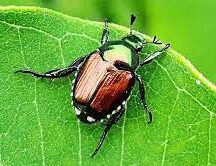
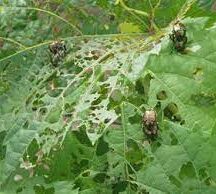
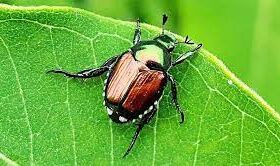
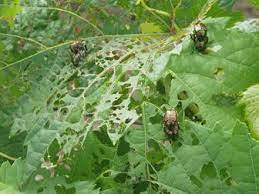
Japanese beetle
Description: The Japanese beetle is a pest that attacks the leaves and flowers of many trees, shrubs and cultivars (250 host plants). Lawn is the preferred host at the larval stage. Adults appear in the summer and are very active for roughly six to eight weeks. They shred the leaf tissue, leaving behind the skeleton of the leaf. These beetles normally feed in groups, starting at the top of the plants and working towards the base.
Detection: Adult Japanese beetles are easy to spot.
Practical measures: At the first signs of an infestation, drop the beetles in a bucket of soapy water to prevent their pheromones from attracting more beetles and worsening the damage.
There doesn’t seem to be a perfect (or immediate) solution when it comes to Japanese beetle control. Most of the time, the tree manages to produce new leaves following the infestation.
Warning! Although the pheromone and flower baits sold with the traps are very effective and trap many beetles every day, research has shown that the traps attract more beetles than they capture. Therefore, susceptible plants near the traps may suffer more damage with the traps than without.
For more information: https://inspection.canada.ca/plant-protection/invasive-species/insects/japanese-beetle/fact-sheet/eng/1328165101975/1328165185309
https://www.iriisphytoprotection.qc.ca/Fiche/Insect?imageId=3173
https://www.omafra.gov.on.ca/IPM/english/apples/insects/japanese-beetle.html#advanced
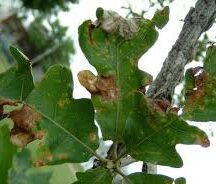
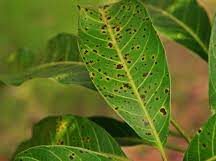
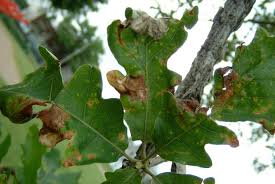
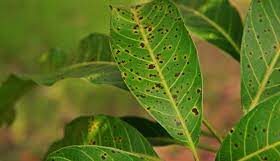
Anthracnose
Description: Anthracnose is a general term for a number of diseases caused by microscopic fungi. Infections are common but damage is usually minor. In severe cases, leaves dry up and fall prematurely, fruit rots, and cankers (sores) develop on the young twigs of trees and shrubs. The incidence of anthracnose fluctuates from year to year, depending on climatic variations.
Detection: The first signs appear on young leaves as discolored circular spots or irregular necrotic lesions. The leaves appear parched by a hot, dry wind or scorched by frost, depending on the season.
Fungi then invade the vascular system, causing petioles to dry up and leaves to drop prematurely. At an advanced stage, small black dots can be seen on the leaves.
Trees growing in shade are more affected than those in full sun, as their foliage stays damp longer.
Anthracnose does not usually kill trees but can weaken them.
Preventive measures: Keep your trees healthy by watering them regularly, particularly in times of drought. Avoid wetting the foliage to prevent the dispersal and germination of spores.
Practical measures: On young trees, remove the first affected leaves by hand when the foliage is dry.
Pick up and dispose of fallen leaves to reduce disease spread.
For more information : https://espacepourlavie.ca/carnet-horticole/ravageurs-et-maladies/anthracnose
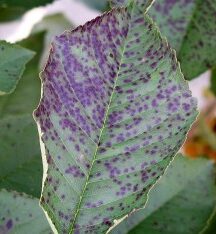
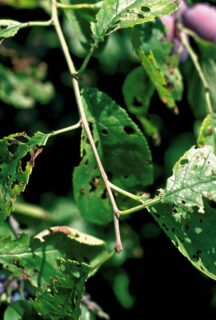
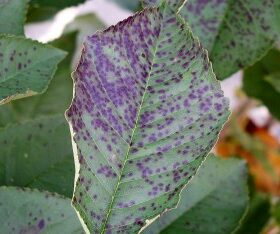
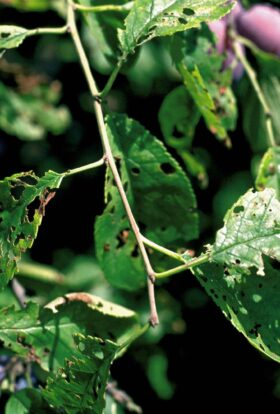
Shot hole disease
Description: Shot hole disease is caused by a fungus which affects the foliage of plants of the Prunus genus. If the disease is not controlled and defoliation is significant for several years in a row, affected trees become more susceptible to winter injury and become weak.
Detection: This disease produces small round or angular spots that are purple or red and eventually turn brown when leaf tissue dies. The dead tissue falls away, leaving holes in the leaf. If humidity levels are high, a mass of white spores may appear on intact lesions on infected leaves. If the infection is severe, the lesions may join together and form large areas of necrotic tissue and leaves may appear chlorotic and drop early.
Preventive measures: Collect and dispose of dead leaves that have fallen to the ground. Water in the morning so that the foliage dries as quickly as possible. Splashing water on the leaves leads to the spread of the disease.
Practical measures: As no fungicide is approved for this disease, pruning and sanitizing tools are the only control measures available.
For more informations : https://www.agrireseau.net/documents/Document_96553.pdf https://agriculture.canada.ca/en/agricultural-production/pest-control-agriculture/agroforestry-pest-diseases/cherry-cribure-virginia
https://reseaupommier.irda.qc.ca/?p=14661
